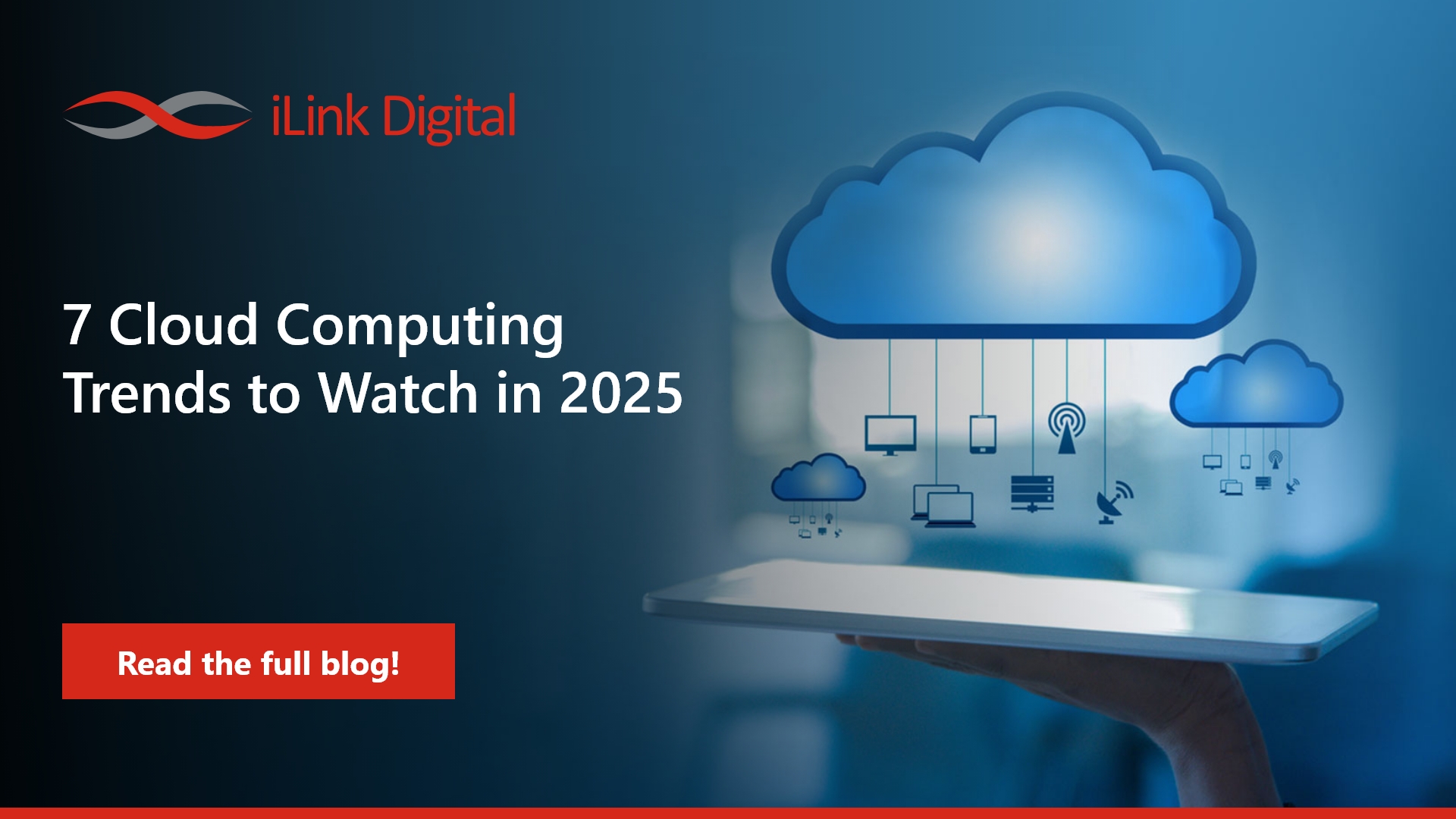7 Cloud Computing Trends to Watch in 2025

Introduction
Over the past few years, the emergence of AI and automation in IT and business operations has unabatedly made strides in the cloud computing landscape. As cloud use cases continue to expand with an increased focus on distributed, hybrid, cloud-native, and multi-cloud environments, the public cloud service market is projected to achieve a 21.5% growth in 2025.
2025 is going to be another major milestone in the history of cloud computing as we will continue to witness disruption across industries due to mainstream usage of technology and the democratization of computing power. Organizations are finding more ways than ever to create value by cutting down costs, accelerating innovation, and automating complex tasks.
As we move into 2025, let’s explore the exciting cloud computing trends shaping the industry in 2025.
Trend #1: AI as a Service (AIaaS): AI-Driven Cloud Computing
Beyond automation, AI is profoundly transforming every aspect of cloud operations, including infrastructure management, real-time resource allocation, threat detection, and optimization. While auto-scaling and serverless workflows already exist, AI-driven cloud operations will take things a step further and add another layer of abstraction. Businesses embracing this paradigm shift will be rewarded with unparalleled efficiency, dramatic cost reductions, and performance improvements that were previously impossible.
Trend #2: Multi/Hybrid Cloud: A Robust Shift Toward Hybrid and Multi-Cloud Services
Gartner predicts that “By 2027, 90% of Organizations Will Adopt Hybrid Cloud.”
Hybrid and multi-cloud adoption will become more prevalent in 2025, driven by a critical need for flexibility, cost optimization, and disaster recovery. By leveraging multiple cloud providers, organizations can select the best features and pricing models tailored to their specific workloads and evolving needs, thereby avoiding the risk of vendor lock-in and unnecessary expenditures while optimizing performance and resource allocation.
Distributing data and applications across various cloud platforms ensures disaster recovery and operational continuity. In the event of a service disruption with one provider, critical resources remain accessible through alternative platforms, minimizing downtime and mitigating data loss risks.
Trend #3: Serverless Computing Goes Mainstream: Edge Computing Merges with Cloud
Serverless Computing is gaining momentum as businesses aim to reduce infrastructure management overhead and enable developers to focus on code development and optimization tasks, paving the way for business agility and responsiveness. It enables faster time-to-market, automatic scaling, and pay-as-you-go pricing models.
With the rapid proliferation of IoT devices and the need for real-time data processing, edge computing brings computation and data storage closer to where data is generated. From self-driving cars to robotic surgery, the synergy between edge and cloud computing gives birth to the new generation of real-time applications ranging from self-driving cars to robotic surgery that are both lightning-fast and incredibly intelligent. This fusion drastically minimizes latency, which is crucial for mission-critical applications.
Trend #4: Quantum Computing Gains Momentum Through Cloud
Quantum computing is poised to revolutionize cloud computing by solving extremely complex problems with unparalleled speed and efficiency that are beyond the capabilities of traditional computers. In 2025, Quantum computing as a Service (QaaS) will gain traction from businesses and industries in material ways. Most of the industry gains have started democratizing access to this breakthrough innovation, making quantum computing available to businesses of all sizes. From drug discoveries to unbreakable encryption, quantum cloud services will bring a new level of speed to businesses that fuel productivity that was previously impossible.
Quantum computing will grow exponentially in the coming years and is expected to grow from $1.1 billion in 2024 to $12.6B in 2032.
Trend #5: The Rise of Industry Cloud Platform
By 2027, 50% of enterprises will have adopted industry cloud platforms to expedite their strategic initiatives. In 2025, Industry cloud platforms (ICP) are expected to make significant strides due to the growing demand for industry-specific solutions. It offers bespoke cloud solutions that align closely with the unique and ever-changing operational needs of industry and regulatory environments. At its core, the industry cloud platforms house encompasses essential pre-built components and functionalities, such as secure data management and advanced data analytics, built with industry regulations and compliance in mind.
Trend #6: Cloud Governance and Data Sovereignty: Private Cloud Adoption is on the Rise
As organizations continue to adopt hybrid or multi-cloud environment, strengthening compliance standards and privacy measures is paramount for navigating the complex global regulatory landscape. Adopting advanced cloud governance strategies is inevitable to ensure secure data management. This strategy must comprise robust access controls, auditing systems, and automated compliance checks across hybrid and multi-cloud environments.
Despite the rapid advancement of public cloud generative AI offerings, Forrester anticipates a notable growth in private cloud adoption in 2025 due to sovereignty, cost, data ownership, and security challenges. This trend is driven by organizations seeking greater control, customization, and compliance capabilities within their cloud environments.
Trends #7: Sustainable and Green Cloud Initiatives
Sustainable and green cloud computing is becoming a top priority in 2025, as major cloud providers are ramping up investments in renewable energy sources and energy efficiency data centers to reduce their carbon footprint. In 2025, we anticipate a surge in enterprises utilizing energy-efficient data centers to navigate pressures related to carbon emissions. This trend will eventually foster a viable brand image, which will ultimately drive business growth and customer trust.
Most importantly, FinOps plays a pivotal role in reducing carbon footprints by providing granular cloud cost visibility into organizations’ cloud usage and costs, thereby helping them to make informed decisions on resource allocations and consumption. Adopting a cloud FinOps strategy will help organizations establish self-governance and foster a cost-conscious culture that promotes financial accountability, business agility, and reduced carbon emissions.
Bottomline
By the end of 2025, the entire cloud computing landscape is set to expand further; enterprises that proactively embrace these trends will be the key to riding the wave of innovation and drive sustainable growth. From AI-driven cloud operations to sustainable green cloud initiatives, these trends are not just reshaping the future of business but also bringing the transformative results across industries.
While we keep you informed about the latest cloud computing trends, we empower businesses to enhance operational efficiency, improve user experiences, and position themselves as leaders in innovation and sustainability. At iLink Digital, we specialize in delivering cutting-edge cloud infrastructure services and solutions tailored to your dynamic business needs.


